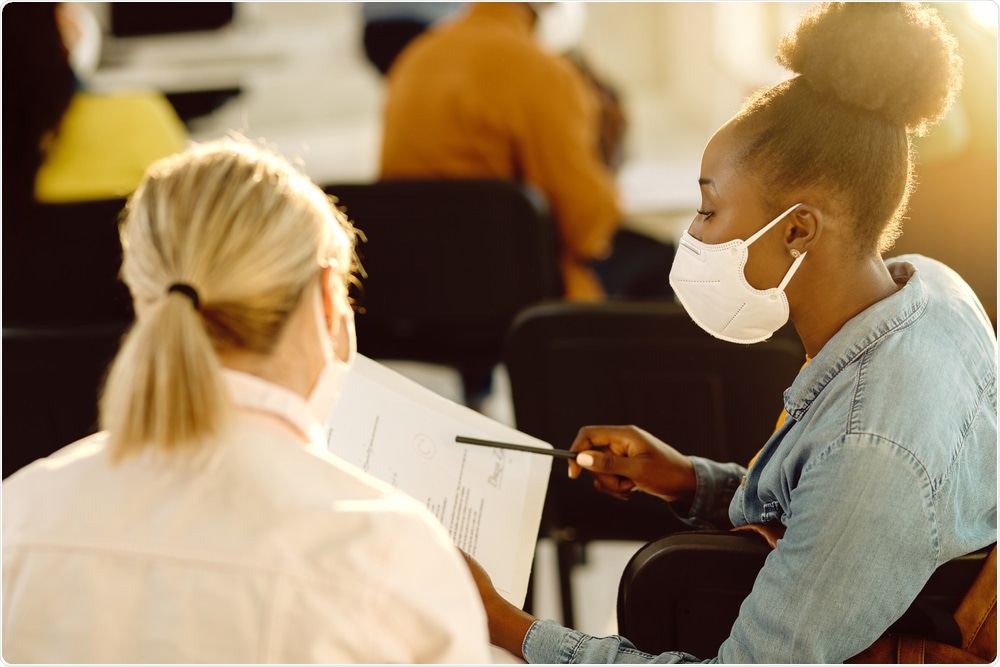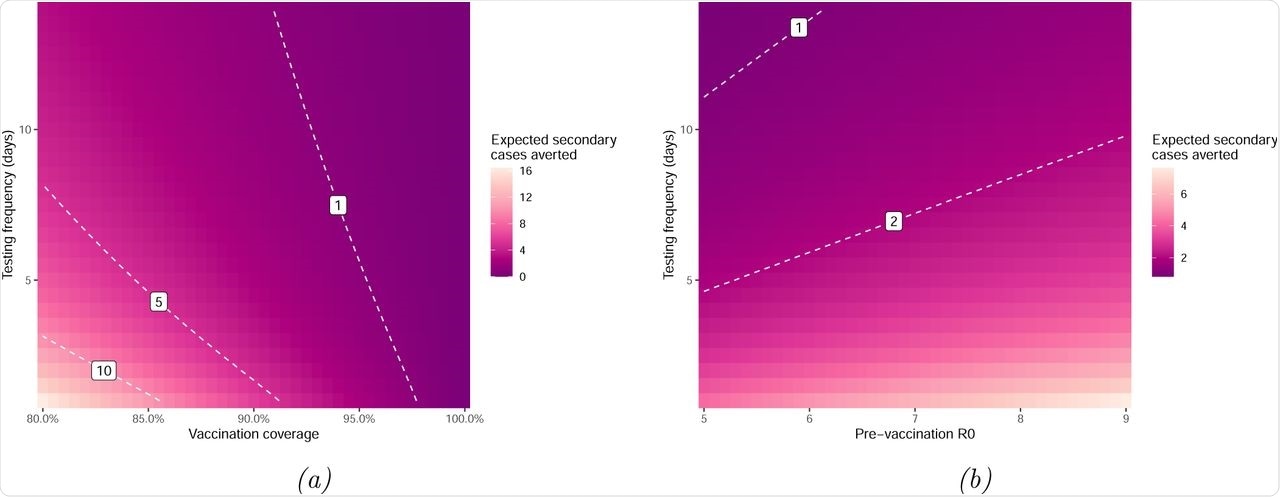In Canada, by April 2020, almost all post-secondary institutions had closed their campuses and began to implement online classes in an attempt to reduce the spread of the severe acute respiratory syndrome coronavirus 2 (SARS-CoV-2), the virus responsible for the coronavirus disease 2019 (COVID-19). By the fall of 2021, most colleges and universities had returned to in-person teaching following the deployment of COVID-19 vaccines.
Close contact among young adults was reintroduced with campus reopening, which is a known driver in the transmission of SARS-CoV-2. To reduce the risk of spread, campuses implemented protocols such as mandatory vaccinations and mask-wearing.
 Study: Impact of routine asymptomatic screening on COVID-19 incidence in a highly vaccinated university population. Image Credit: Drazen Zigic / Shutterstock.com
Study: Impact of routine asymptomatic screening on COVID-19 incidence in a highly vaccinated university population. Image Credit: Drazen Zigic / Shutterstock.com

 *Important notice: medRxiv publishes preliminary scientific reports that are not peer-reviewed and, therefore, should not be regarded as conclusive, guide clinical practice/health-related behavior, or treated as established information.
*Important notice: medRxiv publishes preliminary scientific reports that are not peer-reviewed and, therefore, should not be regarded as conclusive, guide clinical practice/health-related behavior, or treated as established information.
There have been several studies conducted to analyze potential mitigating strategies to control the transmission of COVID-19 in university settings to support the safe return to campuses. Many of these studies have focused on routine testing, mask mandates, physical distancing, and contact tracing. However, only a few studies have considered scenarios that evaluated the effect of a highly vaccinated university population.
In a recent study published on the preprint server medRxiv*, a team of researchers from a variety of Canadian institutes reviewed the previous modeling of COVID-19 transmission in a university setting. The researchers then used this information to highlight the main implications of mass testing to control the spread of SARS-CoV-2 within the context of a vaccinated population. The authors provided a new probabilistic modeling analysis of routine screening of unvaccinated students from the University of British Columbia.
About the study
During a one 12-week semester, the total of expected cases and hospitalizations based on data from recent epidemiological studies depends strongly on vaccination coverage. When vaccine coverage is at 100%, it is expected that there will be 27 cases per 50,000, which is comparable to 226 cases per 50,000 when coverage is at 0%. Within a university population with 100% vaccine coverage, the total expected hospitalizations are 2 per 50,000, as compared to 99 per 50,000 in a university population with 0% vaccine coverage.
 Expected number of secondary cases averted in one 12-week semester per 50000 students. Digits inside box are the number of expected secondary cases averted with parameters values along the curve. (a) Change in cases averted by testing frequency and vaccination coverage when pre-vaccination R0 = 7. (b) Change in cases averted by testing frequency and pre-vaccination R0 when vaccination coverage is 90%.
Expected number of secondary cases averted in one 12-week semester per 50000 students. Digits inside box are the number of expected secondary cases averted with parameters values along the curve. (a) Change in cases averted by testing frequency and vaccination coverage when pre-vaccination R0 = 7. (b) Change in cases averted by testing frequency and pre-vaccination R0 when vaccination coverage is 90%.
A larger pre-vaccination R0 and testing frequency results in an increase in the expected number of secondary cases averted. Previous research concluded that a 95% vaccination rate among students is what is required to safely return to campuses. Also, over 64% of vaccine coverage would lead to less than 5% of the university population becoming infected.
Previous studies have found that frequent testing only results in a substantial reduction in COVID-19 cases when there is no adoption of physical distancing and mask-wearing, assuming a population with at least 40% vaccine coverage and a 100% effective vaccine.
The implementation of routine screening of unvaccinated students on a post-secondary campus, as a policy to control the spread of COVID-19, poses ethical and logistical challenges. The authors developed a probabilistic model to calculate the expectation of the number of secondary cases averted because of routine testing for unvaccinated students to quantify the impact of the policy.
The results suggest that there is a limited benefit associated with routine testing for the mitigation of SARS-CoV-2 spread due to the small number of expected secondary cases that could be prevented with impractical testing frequencies. The authors set a high pre-vaccination R0 in their model to account for the increase in contacts and the highly transmissible Delta variant.
Even with a vaccination rate of 80% among students and university staff, only 18 secondary cases are averted in this study during one semester, with routine screening conducted once per day. Demonstrated by these results are the potential limitations associated with routine testing in unvaccinated individuals as a policy when vaccine coverage is high and community incidence is relatively low.
Implications
There are limited benefits associated with the routine testing of unvaccinated individuals for a university with high vaccine coverage and low community transmission. As shown in previous studies, implementing other mitigating strategies such as mask-wearing, and physical distancing may be more important in controlling the spread of SARS-CoV-2.

 *Important notice: medRxiv publishes preliminary scientific reports that are not peer-reviewed and, therefore, should not be regarded as conclusive, guide clinical practice/health-related behavior, or treated as established information.
*Important notice: medRxiv publishes preliminary scientific reports that are not peer-reviewed and, therefore, should not be regarded as conclusive, guide clinical practice/health-related behavior, or treated as established information.